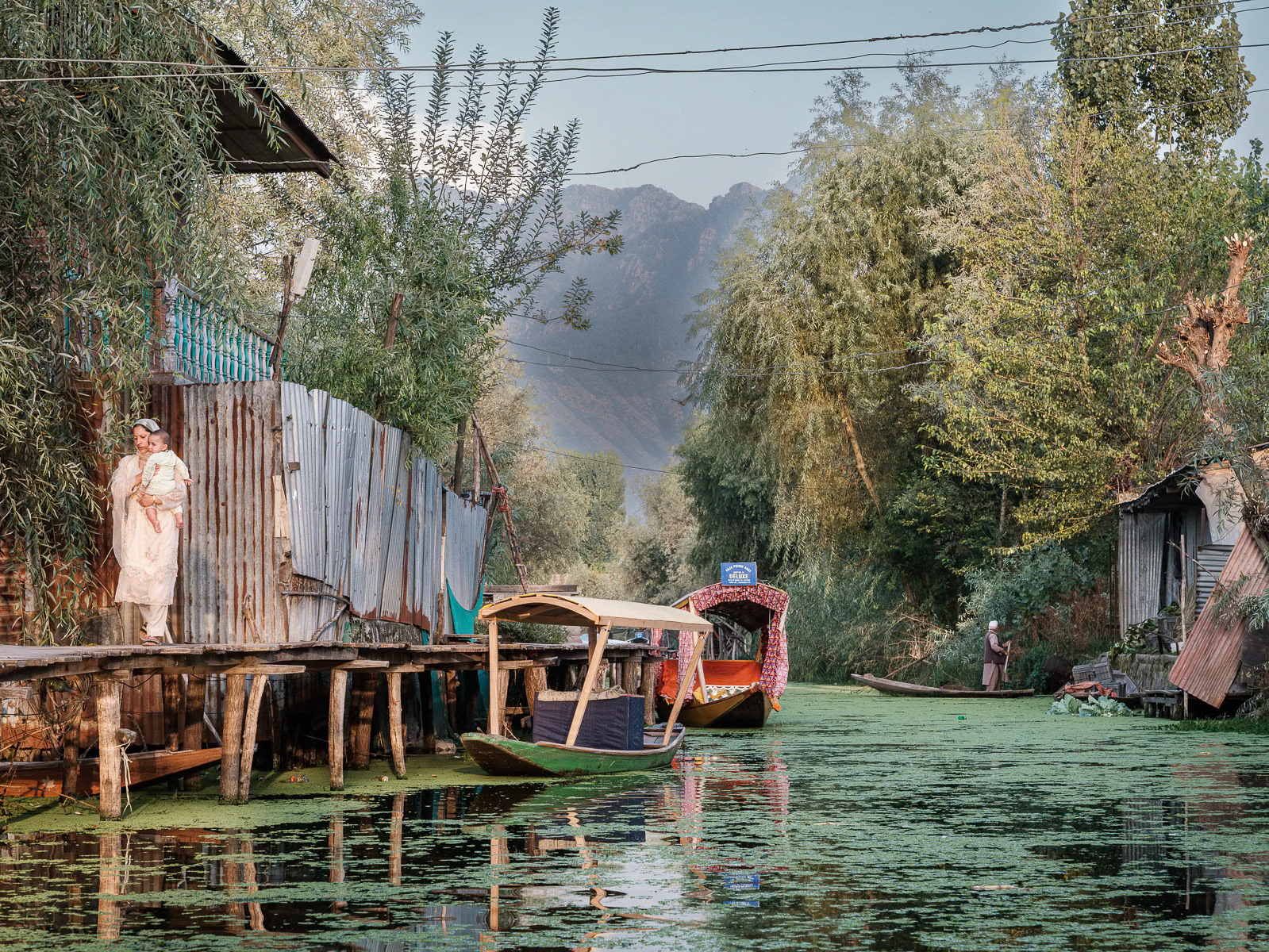The Western Sahara conflict, one of Africa's longest-running disputes, has persisted for over 40 years. It began in the early 1970s with an insurgency by the Polisario Front against Spanish colonial forces, followed by the Western Sahara War between the Polisario and Morocco from 1975 to 1991. The conflict escalated after Spain withdrew from the region. The Polisario, backed by Algeria, waged a 16-year-long struggle for independence against invading Mauritanian and Moroccan forces. In 1976, the Polisario declared the establishment of the Sahrawi Arab Democratic Republic (SADR), which, although unrecognized by the United Nations, received support from several African and Latin American nations.
In 1979, Mauritania withdrew from the conflict, leaving Morocco and the Polisario to contest the territory. After 16 years of fighting, a ceasefire was agreed upon in 1991. Since then, Morocco has controlled most of the Western Sahara, including its coastal areas and valuable mineral resources, which it has integrated into its territory as the "Southern Provinces." The Polisario, however, controls roughly 20% of the territory, known as the SADR, and maintains its government in exile, based in refugee camps in Algeria.
The territorial annexation by Morocco has not been recognized internationally, and the region remains in a state of political limbo. A key feature of the conflict is the 2,700-kilometer sand wall built by Morocco, which separates Moroccan-controlled areas from those controlled by the Polisario. This wall, often referred to as the "wall of shame," has been heavily mined, with an estimated 5 to 7 million landmines, making it one of the most dangerous and heavily fortified borders in the world.
The refugee crisis, however, is one of the most tragic and enduring aspects of this conflict. The Sahrawi refugee camps in Tindouf, Algeria, were established in the mid-1970s to shelter those fleeing the advancing Moroccan and Mauritanian forces. Over 150,000 Sahrawi refugees—many of whom are descendants of the original evacuees—still live in these camps, in harsh conditions in a remote desert region. The camps, dependent on international aid for basic necessities like food, water, and shelter materials, are facing severe shortages due to the global refugee crisis. Basic food items, particularly fruits, vegetables, and nutritious food, are in short supply, leading to high levels of malnutrition among children and women.
The living conditions in the camps are harsh, with frequent flash floods damaging shelters, which are primarily tents or mud brick houses. In recent years, some of these shelters have been replaced with concrete block structures, but the Sahrawi refugees remain heavily reliant on external humanitarian aid. After more than four decades, there are limited prospects for self-sufficiency in this isolated desert environment, making the situation unlikely to change in the foreseeable future.
The Western Sahara conflict, characterized by political stalemate and suffering, remains one of the most protracted and forgotten refugee crises in the world.

The Western Sahara protracted conflict between the Polisario Front and the Kingdom of Morocco started from an insurgency by the Polisario against the occupying Spanish colonial forces from 1973 to 1975 and the subsequent Western Sahara War against Morocco that lasted from 1975 to 1991. The armed conflict escalated in full war with the withdrawel of Spain from the area. The Polisario Front, backed by Algeria, waged a 16 year-long war for independence against the invading forces of Mauritania and Morocco. In 1976, the Polisario Front declared the establishment of the Saharawi Arab Democratic Republic (SADR), which was not admitted into the United Nations, but won recognition from a number of other states, mainly in Africa and Latin America. In 1979, Mauritania withdrew from the conflict and the territories it was occupying, leaving only Moroccan forces and the Polisario in the disputed territory. Finally after 16 years of war, a cease-fire agreement was reached in 1991.Since then until now most of the Western Sahara remained under Moroccan control, while the Polisario controls only 20% of the territory as the Saharawi Arab Democratic Republic with an additional area in Algeria where the Saharawi Refugee camps and the SADR government in exile is vested. At present most of the Western Sahara, the entire coastal area and its unlimited valuable mineral resources are controlled and settled by the Moroccan government and considered an intergral part of the Moroccan territory as the "Southern Provinces". This de facto territorial annexation has not been recognised by the United Nations or any other State. Morocco has, as early as 1979, been building a 2,700 Km long sand wall separating it from the Polisario controlled areas but also cutting all communication between Saharawi nomadic communities used to roam freely the desert. Also, an estimated 5 to 7 million landmines have been laid along the wall making it the longest active security wall in the world and one of the most heavily mined areas on the planet. It is often refered to as the wall of shame. The Saharawi refugee camps in Tindouf, Algeria, are a cluster of 5 refugee camps spread out in a very remote desertic area. The camps were established in 1975-76 for Saharawi refugees fleeing advancing Moroccan and Mauritanian troops. Most of the original refugees with an additional two generations are still living in the camps, making it one of the most protracted and forgotten refugee crisis in the world. An estimated 150,000 Saharawi refugees live today in the camps, where it is nearly impossible to sustain basic life. Food, water, building materials, firewood and clothing are brought in by car and truck mainly by international aid agencies. But with ever growing refugee crisis around the world, aid to the Saharawi refugees is being substantially reduced or completely stopped. With lack of food, especially vegetables, fruit and nutritious food, many children and women suffer from severe to acute nutritional defeciencies. The camps are sometimes also hit by severe flash floods that destroy shelters usually consisting of tents and 'hard' mud brick houses. During the past decade, tents and mud brick structures are being gradually replaced by concrete block shelters. The Saharawi refugee population is more than 40 years later still fully dependent on external humanitarian aid, and with limited opportunities for self-reliance in the harsh desert environment it is likely to continue for the foreseeable future. Smara Saharawi refugee camp and its 30,000 residents. Tindouf, Algeria, December 2019

Smara Saharawi refugee camp and its 30,000 residents. The camp was established more than 40 years ago and only during the past 10-15 years have hard shelters replaced tents. Tindouf, Algeria, December 2019

Boxing club for the Saharawi youth of Smara refugee camp. Tindouf, Algeria, December 2019

Saharawi children during social activities.. Saharawi refugee camps were established in the seventies in an area managed by the POLISARIO, the government in exile of the Saharawi Arab Democratic Republic (SADR). Between 120 and 150,000 refugees from the Western Sahara live in 5 refugee camps in the desert south of Tindouf. Smara Refugee Camp, Algeria, December 2019

Women carrying water. Smara Saharawi refugee camp and its 30,000 residents. The camp was established more than 40 years ago and only during the past 10-15 years have hard shelters replaced tents. Tindouf, Algeria, December 2019

Vocational training center for adolescents with special needs. Bojador Saharawi refugee camp, Tindouf, Algeria, December 2019

Saharawi children in Smara refugee camp. Saharawi refugee camps were established in the seventies in an area managed by the POLISARIO, the government in exile of the Saharawi Arab Democratic Republic (SADR). Between 120 and 150,000 refugees from the Western Sahara live in 5 refugee camps in the desert south of Tindouf. Bojador Refugee Camp, Algeria, December 2019 in Smara. Saharawi refugee camps were established in the seventies in an area managed by the POLISARIO, the government in exile of the Saharawi Arab Democratic Republic (SADR). Between 120 and 150,000 refugees from the Western Sahara live in 5 refugee camps in the desert south of Tindouf. Smara Refugee Camp, Algeria, December 2019
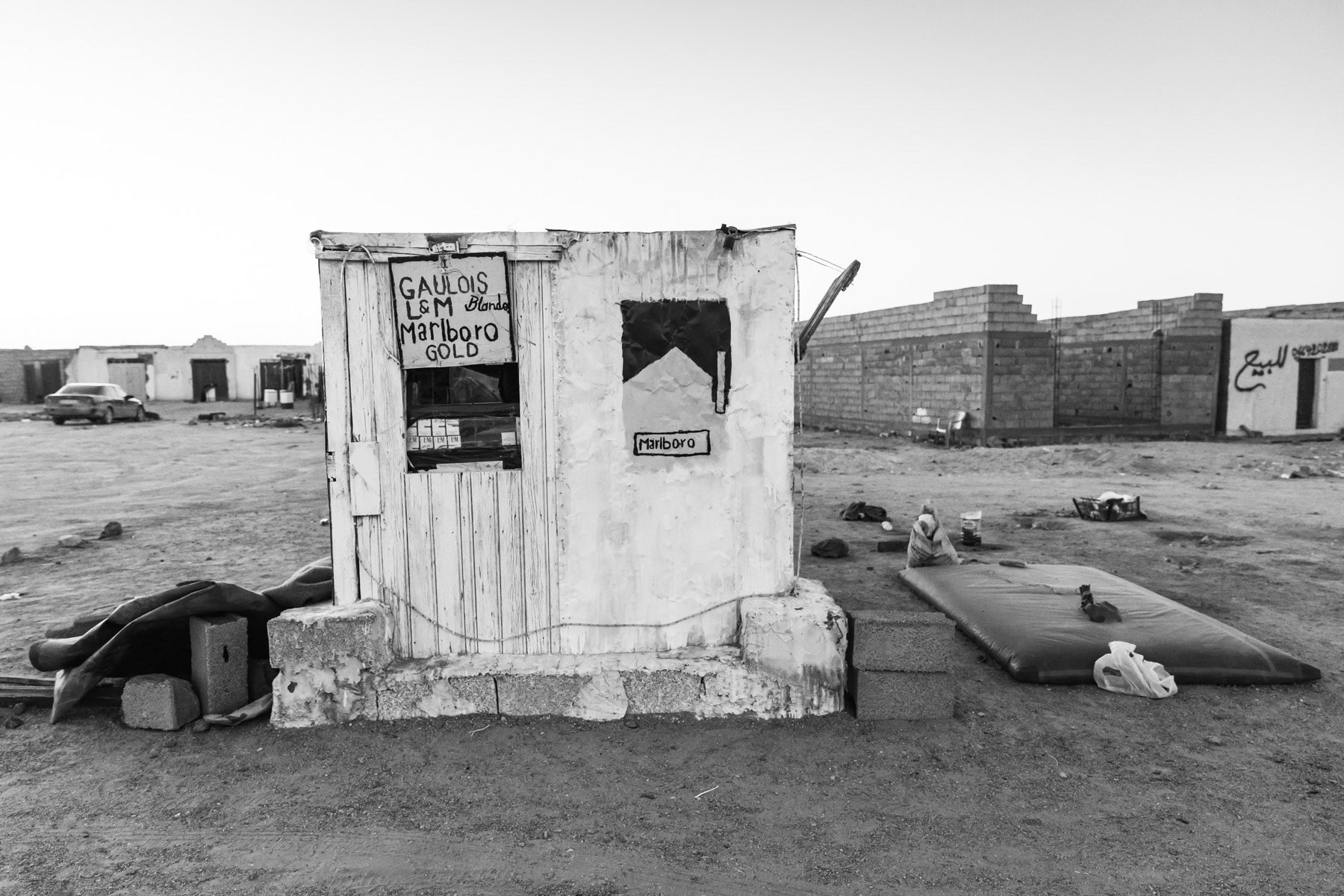
Shop, Bojador Saharawi refugee camp, Tindouf, Algeria, December 2019

General hospital in Rabouni mangaged by the Polisario with the help of international cooperation. Rabouni Tindouf, Algeria, December 2019

Saharawi children going to school in Bojador. Saharawi refugee camps were established in the seventies in an area managed by the POLISARIO, the government in exile of the Saharawi Arab Democratic Republic (SADR). Between 120 and 150,000 refugees from the Western Sahara live in 5 refugee camps in the desert south of Tindouf. Bojador Refugee Camp, Algeria, December 2019

A Saharawi refugee feeding his livestock. Bojador refugee camp, Tindouf, Algeria, December 2019

Saharawi refugee, Polisario Bojador Refugee Camp near Tindouf in Algeria, December 2019
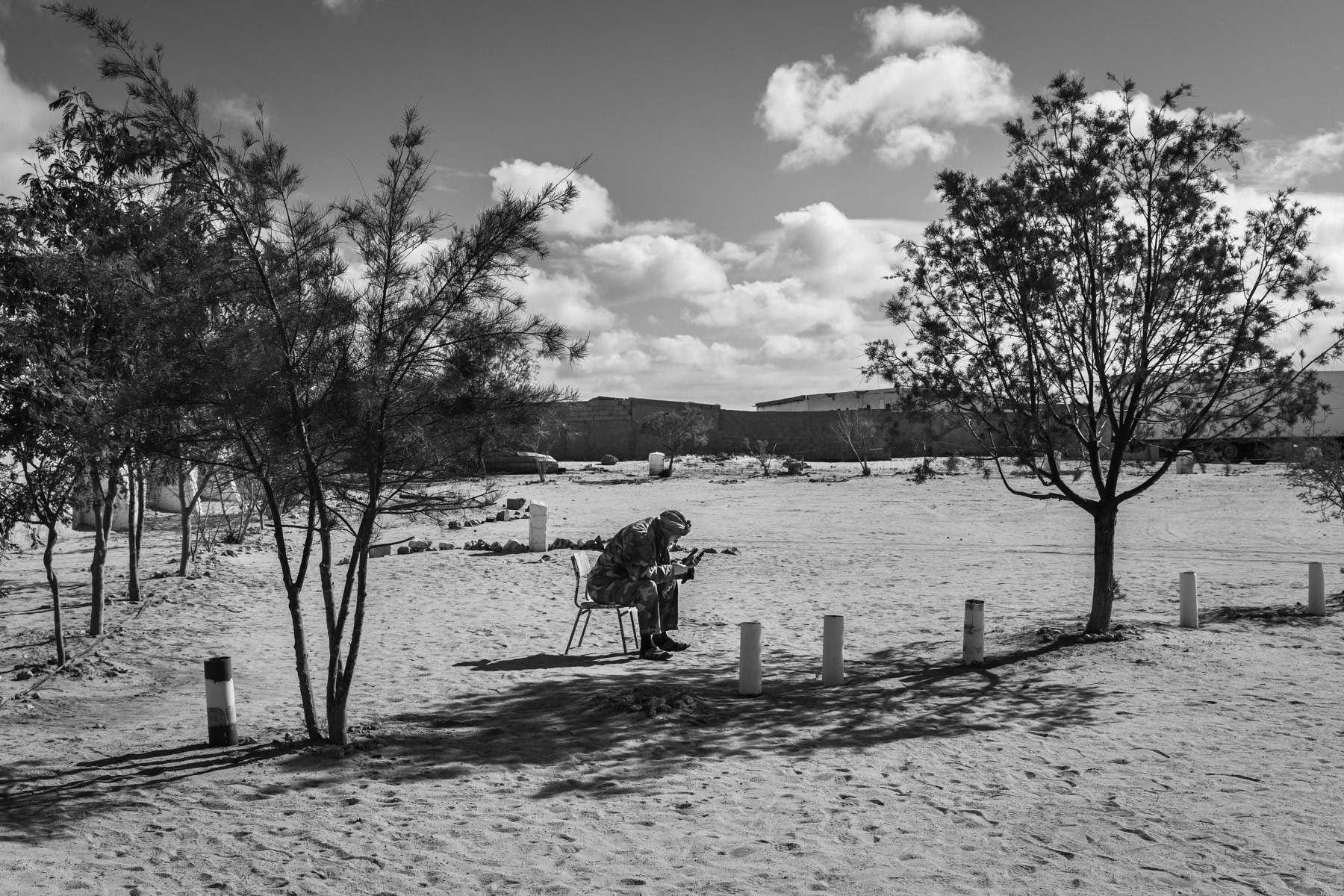
The Western Sahara protracted conflict between the Polisario Front and the Kingdom of Morocco started from an insurgency by the Polisario against the occupying Spanish colonial forces from 1973 to 1975 and the subsequent Western Sahara War against Morocco that lasted from 1975 to 1991. The armed conflict escalated in full war with the withdrawel of Spain from the area. The Polisario Front, backed by Algeria, waged a 16 year-long war for independence against the invading forces of Mauritania and Morocco. In 1976, the Polisario Front declared the establishment of the Saharawi Arab Democratic Republic (SADR), which was not admitted into the United Nations, but won recognition from a number of other states, mainly in Africa and Latin America. In 1979, Mauritania withdrew from the conflict and the territories it was occupying, leaving only Moroccan forces and the Polisario in the disputed territory. Finally after 16 years of war, a cease-fire agreement was reached in 1991.Since then until now most of the Western Sahara remained under Moroccan control, while the Polisario controls only 20% of the territory as the Saharawi Arab Democratic Republic with an additional area in Algeria where the Saharawi Refugee camps and the SADR government in exile is vested. At present most of the Western Sahara, the entire coastal area and its unlimited valuable mineral resources are controlled and settled by the Moroccan government and considered an intergral part of the Moroccan territory as the "Southern Provinces". This de facto territorial annexation has not been recognised by the United Nations or any other State. Morocco has, as early as 1979, been building a 2,700 Km long sand wall separating it from the Polisario controlled areas but also cutting all communication between Saharawi nomadic communities used to roam freely the desert. Also, an estimated 5 to 7 million landmines have been laid along the wall making it the longest active security wall in the world and one of the most heavily mined areas on the planet. It is often refered to as the wall of shame. The Saharawi refugee camps in Tindouf, Algeria, are a cluster of 5 refugee camps spread out in a very remote desertic area. The camps were established in 1975-76 for Saharawi refugees fleeing advancing Moroccan and Mauritanian troops. Most of the original refugees with an additional two generations are still living in the camps, making it one of the most protracted and forgotten refugee crisis in the world. An estimated 150,000 Saharawi refugees live today in the camps, where it is nearly impossible to sustain basic life. Food, water, building materials, firewood and clothing are brought in by car and truck mainly by international aid agencies. But with ever growing refugee crisis around the world, aid to the Saharawi refugees is being substantially reduced or completely stopped. With lack of food, especially vegetables, fruit and nutritious food, many children and women suffer from severe to acute nutritional defeciencies. During the past decade, tents and mud brick structures are being gradually replaced by concrete block shelters. The Saharawi refugee population is more than 40 years later still fully dependent on external humanitarian aid, and with limited opportunities for self-reliance in the harsh desert environment it is likely to continue for the foreseeable future. The entrance of the Saharawi Liberation War Museum guarded by a war veteran of the Polisario. Rabouni, Tindouf Province, Algeria, December 2019
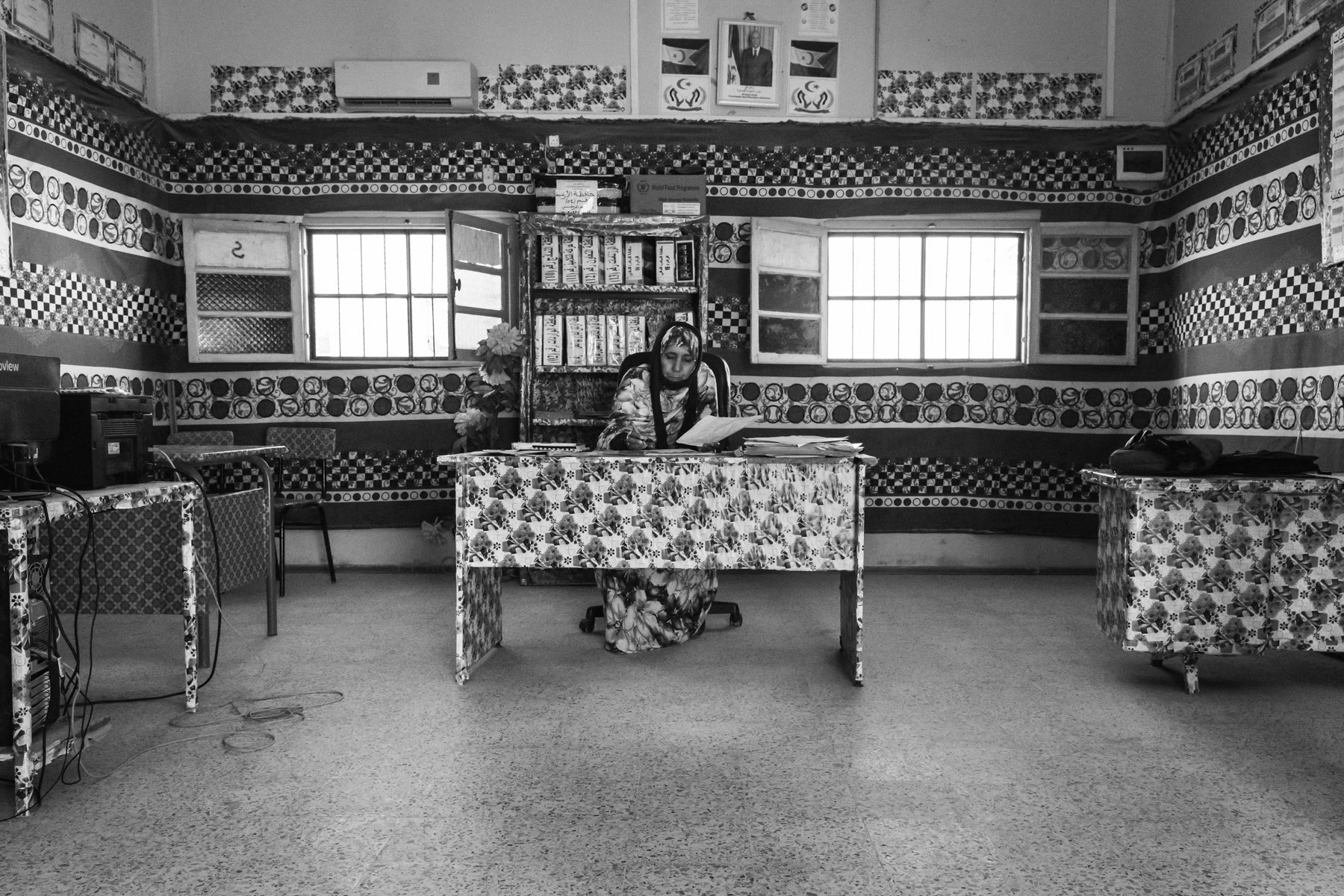
Head master of the Smara secondary school. Smara Saharawi refugee camp, Tindouf, Algeria, December 2019

Saharawi children after school. Saharawi refugee camps were established in the seventies in an area managed by the POLISARIO, the government in exile of the Saharawi Arab Democratic Republic (SADR). Between 120 and 150,000 refugees from the Western Sahara live in 5 refugee camps in the desert south of Tindouf. Bojador Refugee Camp, Algeria, December 2019

Rabouni, an area in South Western Algeria allocared to the Polisario, de de facto government in exile of the Western Sahara, a disputed territory occupied for 80% by Morocco since 1976. Between 120 and 150,000 Sahawari refugees live in this desertic area in 5 refugee camps and Rabouni as government and admisistrative center. Rabouni, Tindouf Province, Algeria, December 2019

Saharawi child in Smara. Saharawi refugee camps were established in the seventies in an area managed by the POLISARIO, the government in exile of the Saharawi Arab Democratic Republic (SADR). Between 120 and 150,000 refugees from the Western Sahara live in 5 refugee camps in the desert south of Tindouf. Smara Refugee Camp, Algeria, December 2019

Remainder of a Moroccan tank captured during the liberation war between the Polisario and Morocco in 1975-1991. An area in South Western Algeria is allocared to the Polisario, de de facto government in exile of the Western Sahara, a disputed territory occupied for 80% by Morocco since 1976. Between 120 and 150,000 Sahawari refugees live in this desertic area in 5 refugee camps and Rabouni as government and admisistrative center. Rabouni, Tindouf Province, Algeria, December 2019

Association of families of Saharawi prisoners and disappeared in Rabouni. Aziza Boutebaa is the daughter of Hanafi who was abducted by Moroccan military in 1986 and most likely executed shortly after. His remains were found in 1991 in a well in the territories of the Western Sahara that are now under Moroccan control. In 2008 her brother dissapeared from Laayoune, and was probably abducted because he installed satellite antennas that could receive Saharawi TV programs. His family has no news about his location or if he is still alive. Hundreds of Saharawi that have disappeared in the territories controlled by Morocco are unaccounted for. In 2013 mass graves started to be found and forensic exhumation is slowly starting. Aziza still lives to this date in areas under Moroccan control. Rabouni, Tindouf, Algeria, December 2019

Library in the Saharawi refugee camp of Bojador, Tindouf, Algeria, December 2019
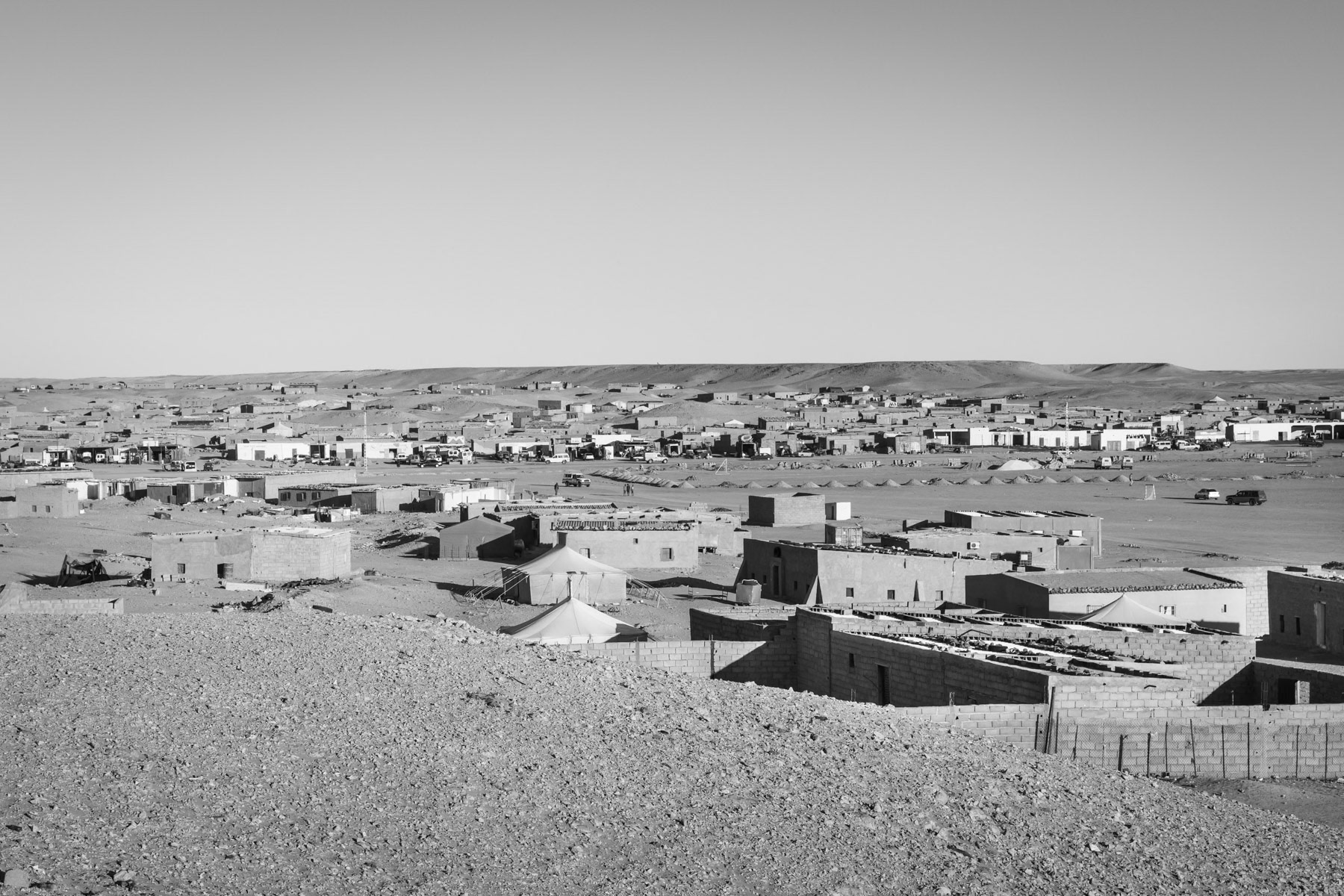
Bojador Saharawi refugee camp. Tindouf, Algeria, December 2019

Saharawi child playing on a sand dune overlooking Smara refugee camp. Saharawi refugee camps were established in the seventies in an area managed by the POLISARIO, the government in exile of the Saharawi Arab Democratic Republic (SADR). Between 120 and 150,000 refugees from the Western Sahara live in 5 refugee camps in the desert south of Tindouf. Smara Refugee Camp, Algeria, December 2019

Central Warehouse of the Saharawi Red Crescent from where WFP food items are being distributed throughout the 5 Saharawi refugee camps. Saharawi refugees living in the camps in the Southern Algerian desert, depend on international aid and food distrubutions to subsist for the past 40 years. Rabouni, Tindouf, Algeria, December 2019

Rabouni, an area in South Western Algeria allocared to the Polisario, de de facto government in exile of the Western Sahara, a disputed territory occupied for 80% by Morocco since 1976. Between 120 and 150,000 Sahawari refugees live in this desertic area in 5 refugee camps and Rabouni as government and admisistrative center. Rabouni, Tindouf Province, Algeria, December 2019
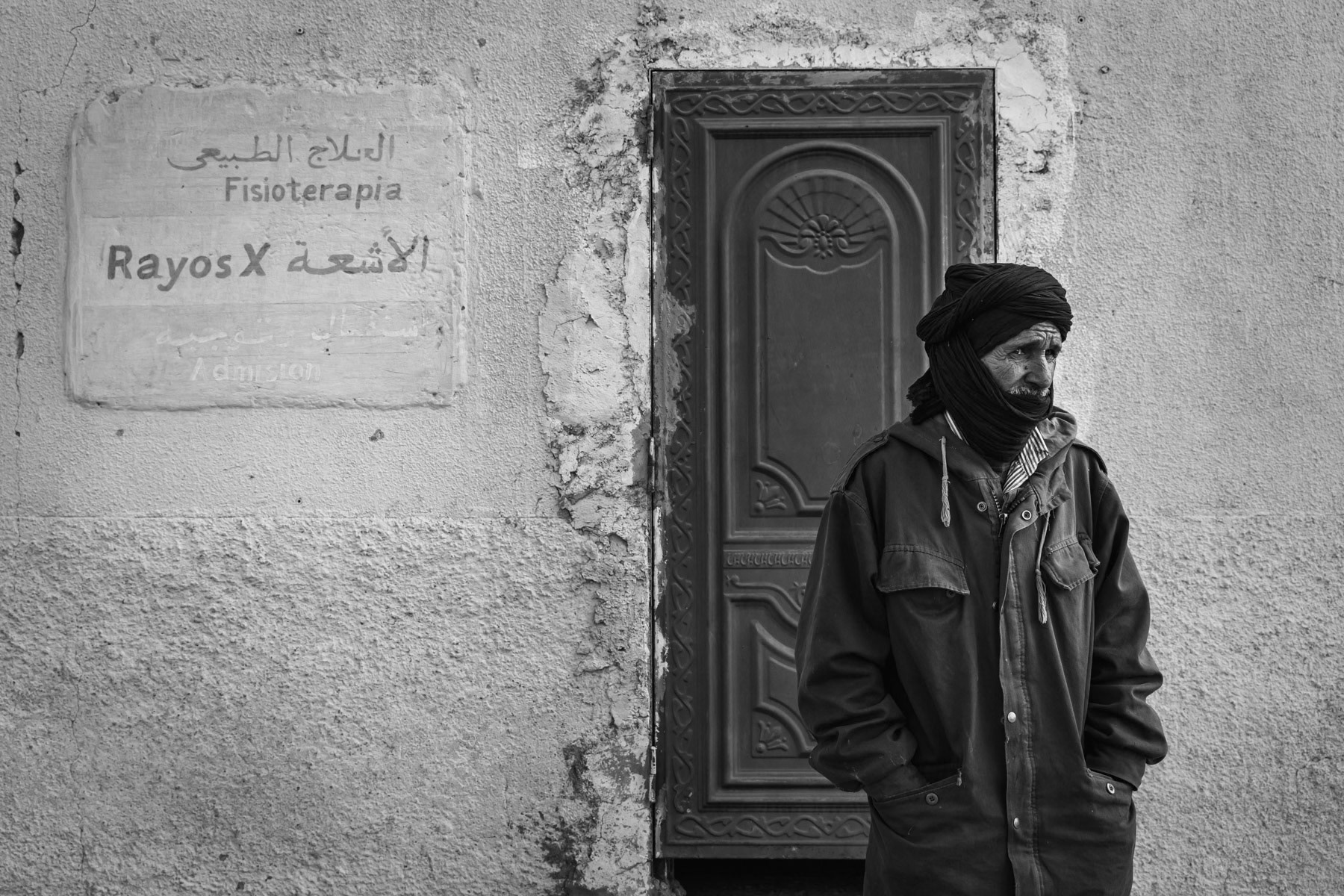
General hospital in Rabouni mangaged by the Polisario with the help of international cooperation. Rabouni Tindouf, Algeria, December 2019

A shoemaker in his workshop in Smara. Because of the extreme isolation of the refugee camps it is very difficult to procure needed materials, but enhancing recycling habits. Smara Saharawi refugee camp Tindouf, Algeria, December 2019

Rabouni, an area in South Western Algeria allocared to the Polisario, de de facto government in exile of the Western Sahara, a disputed territory occupied for 80% by Morocco since 1976. Between 120 and 150,000 Sahawari refugees live in this desertic area in 5 refugee camps and Rabouni as government and admisistrative center. Rabouni, Tindouf Province, Algeria, December 2019

Smara Saharawi refugee camp and its 30,000 residents. The camp was established more than 40 years ago and only during the past 10-15 years have hard shelters replaced tents. Tindouf, Algeria, December 2019

Smara Saharawi refugee camp and its 30,000 residents. The camp was established more than 40 years ago and only during the past 10-15 years have hard shelters replaced tents. Tindouf, Algeria, December 2019

Animal market in Smara. Keeping livestock is the main subsistance for most refugees in the Saharawi camps. Smara refugee camp, Tindouf, Algeria, December 2019

Bojador Saharawi refugee camp. Tindouf, Algeria, December 2019




